Tags
Anthony Sher, Barbara Hepworth sculpture, brick walls, bridges, buildings, Castle Green, Comedy Alley, headstops, history, Howard and Son fishmonger and Game Dealer, Jarrolds, No.12, Norwich, Norwich Castle, Norwich Cathedral, Oliver Ford Davies, River Wensum, St Andrew's Hall, St Clement the Martyr's church, St George's Bridge, St George's St, St Peter Mancroft, stone mason, The Guildhall, The Mischief Tavern, Tombland Alley, Tye Bridge, University of the Arts, walking
It is some time since I wrote about Norwich so this post will feature a walk I took last October – over a year ago! At that time I often dropped Elinor off at college and then wandered about the city until it was time to collect her and take her home again. This year she has longer hours at college and as Richard and I share the driving I don’t need to spend time in the city unless I want to.
The Guildhall was built in the early 15th century after the city was granted a charter in 1404. The building was used for civic and judicial assemblies and courts from 1413 until 1938, when the new City Hall was built and 1985, when the new Court buildings were opened. Some of the rooms are still used today by the City Council; the building also houses the Sheriff’s Chambers.
Funding for the building came from increased taxes, voluntary contributions and bequests to the city. Despite this, much of the labour went unpaid. The city was granted a warrant in 1407 which instructed men from many different trades to work for no pay, often for fifteen hours at a time; only the highest skilled craftsmen were paid. Most of the construction of the Guildhall was carried out between 1407 and 1413. By 1435 the tower and porch had been added and by 1453 the final windows were glazed.
The building was constructed from flint rubble faced with knapped flint and infill and the east end, which was reconstructed in the 16th century (shown on the first of my photos), was crafted from alternate squares of faced flint and ashlar stone giving the Guildhall its distinctive chequered look.
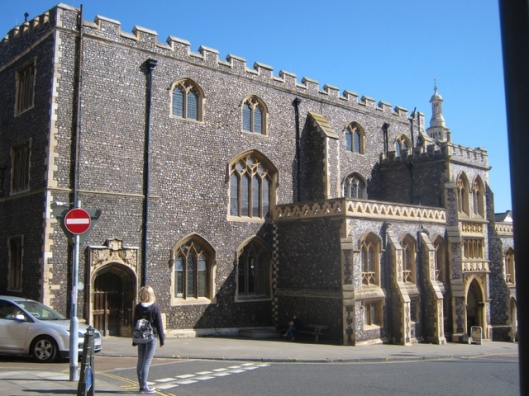
Guildhall – showing the reconstructed porch. Many of the windows were replaced during the 19th and early 20th centuries.
Much of the exterior is Victorian and Edwardian, as massive reconstruction was carried out in both 1861 and 1908. The porch was reconstructed in the Gothic style, as were the replaced windows. A clock tower was also added. A link here (click on ‘The Guildhall‘ ) shows a drawing of what the Guildhall looked like before the old porch (on the left of the building) was demolished.
At present only the ground-floor rooms and porch are accessible to the general public ( a café and a crystal shop use the space). It is interesting to sit in the café having coffee and realise that you are in a virtually unchanged Victorian courtroom. It is hoped that the rest of the building will soon be open to the public.
I walked to the bottom of Guildhall Hill and into London Street where I saw this ornate facade above Jarrold’s Department Store. The frieze illustrates trades and crafts in Norwich.
I made my way up the hill towards the Castle
This inn is about 250 years old and used to be a popular place to visit to watch the executions at the castle opposite!
I arrived at Castle Green and from there was able to see across the city.
I walked from Castle Meadow to St Georges Street and on towards the River Wensum.

I admired this ornate brick wall. Red bricks made in this part of England are soft and weather easily.
The Halls are a collection of beautiful flint-built buildings and St Andrew’s is the largest and most ornate. Together, the Halls form the most complete friary complex surviving in England. The first Dominican Black Friars’ priory was destroyed by fire and St Andrew’s was the nave of the new church which was completed in 1449. The site was in danger of being destroyed during the Reformation (during the 16th century) but was saved by the City Corporation which bought it from the King for use as a ‘common hall’. Since then the complex has been used for worship,as a mint and as a workhouse. St Andrew’s Hall has an impressive hammerbeam roof which was a gift from the Paston family whose town house was in Elm Hill nearby.
The slideshow beneath is of photos of some of the headstops decorating the outside of St Andrew’s Hall
The faces were probably of local dignitaries and may not be particularly flattering! A dragon symbolizes Satan, the devil or evil; the dragon next to the carving of Christ may symbolize Christ’s victory over evil. A fish symbolizes Jesus but it can also be used as a warning about the Last Judgement. A bird symbolizes the soul; if the bird in the carving is a dove then it symbolizes God the Holy Spirit. A lion symbolizes many things. It is the emblem of St Mark and is also associated with Daniel, Samson and St Jerome. It can symbolize strength and majesty, therefore Jesus. Carvings or statues of lions are often used in Italian churches as defensive bulwarks. The lion symbolizes vigilance. The lion can also symbolize evil, or the Devil. “Your enemy the Devil prowls around like a roaring lion looking for someone to devour”, says St Peter in his First Epistle. The Green Man, as Roger Deakin says in his book ‘Wildwood’, is “…the spirit of the rebirth of nature. He is the chucked pebble that ripples out into every tree ring. He is a green outlaw and he is everywhere…
Next to St Andrew’s Hall and adjoining the ornate brick wall is…
A Garth is an open space within cloisters; a close or yard; a garden or paddock. Garth is a Middle English word from the Old Norse word garthr related to Old English geard meaning ‘yard’. (The Concise Oxford Dictionary)
This building was originally built for the Technical College which is now City College Norwich. City College was given a new building in 1953 on Ipswich Road and this building was handed over to the Art College.
Crossing over St George’s Bridge I came to the Norwich Playhouse Theatre on the left and a small park or plaza on the right. The Barbara Hepworth sculpture is in this park.
I walked for a little along the riverside.

Riverside art student grafitti. ‘Artists should retrieve and learn to enjoy the inner sanctuary of their studios’
I made my way towards Tye Bridge using a little alley-way.
The alleyway brought me to St Clement’s church on the corner of Colegate and Fye Bridge Street.
He was wearing what looked like a folded paper hat.
I have been meaning to go and visit the place for over a year now!
Next to the church was the pub.
Fye Bridge Street becomes Wensum Street which then becomes Tombland all in a few hundred yards. At the gate to the Anglican Cathedral I crossed over the road and went up Tombland Alley.
The gentleman standing at the entrance to the alleyway is the actor Oliver Ford Davies and I had recognised him as he walked through the alley. He had a map with him and was wandering about the city looking at the buildings. I, my mother and Elinor had seen him on the stage at the Theatre Royal the night before when he was playing the part of Shallow in Shakespeare’s Henry IV Part 2. The night before that we had seen Henry IV Part 1. The great Anthony Sher played the part of Falstaff in both plays – a wonderful double production.
These marks were used by tradesmen to identify themselves and authenticate their goods (wikipedia)
I soon made my way back to the Guildhall and then to the college where I met my daughter.
Thanks for visiting!




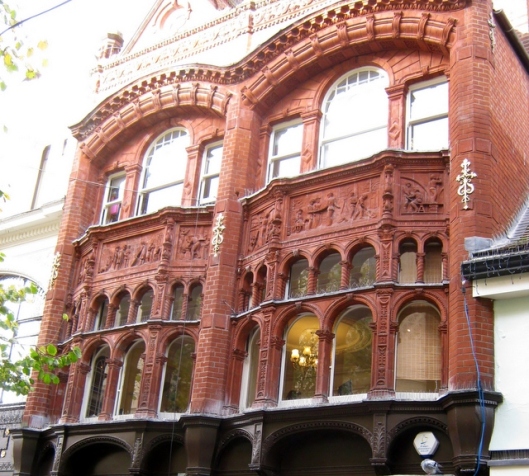





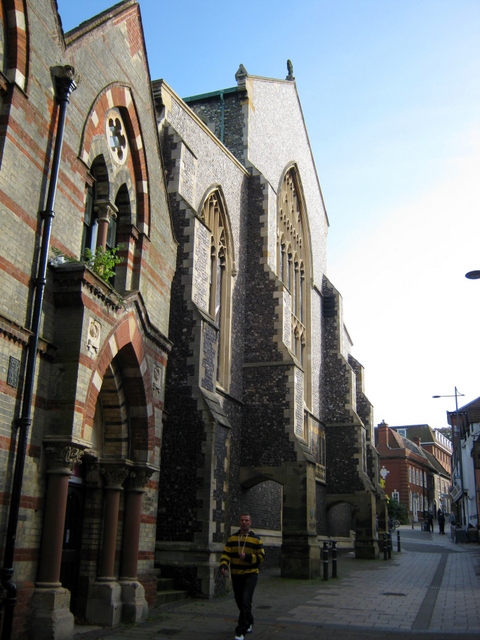



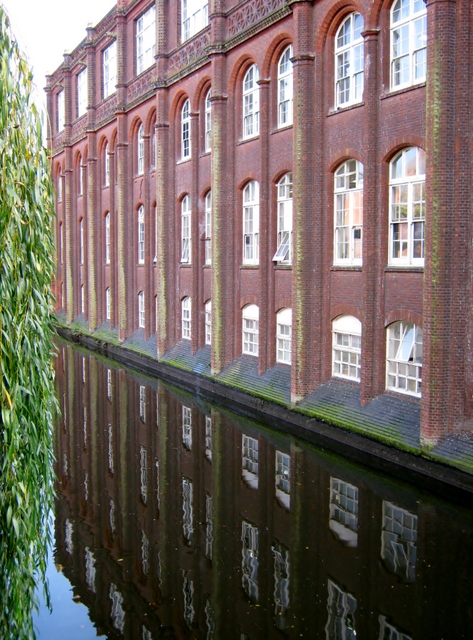

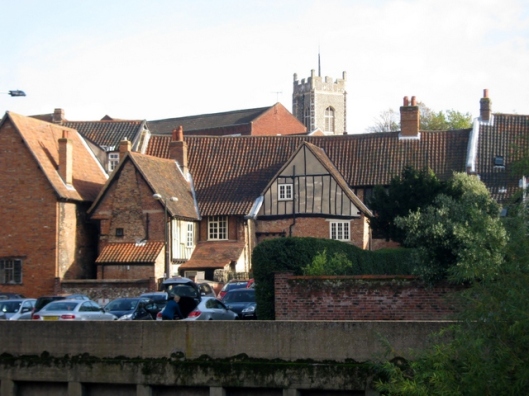


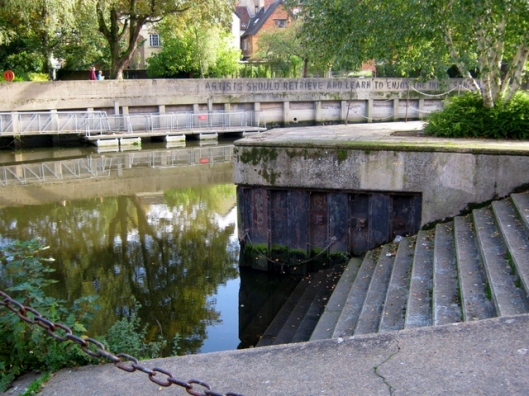




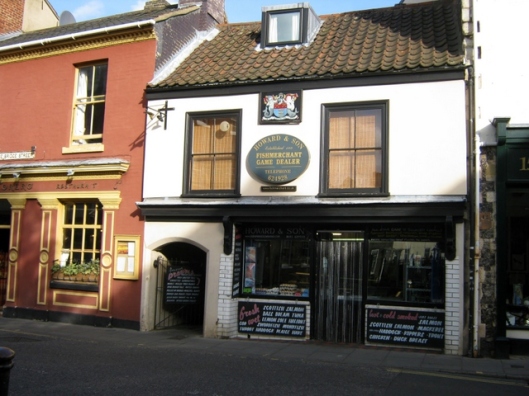






I enjoy your walks Clare and this is a really interesting part of the country, we stayed at Reepham a few weeks ago for a long weekend with my Dad, I did not get the chance but he went to the Edith Cavell exhibition at Norwich Cathedral.
LikeLiked by 1 person
Thank-you Julie! Your Dad lives in a lovely place too. I haven’t managed to see the Edith Cavell exhibition either and she is one of my great heroes!
LikeLiked by 1 person
We have a very large family, so after some searching found a very large house to rent for a long weekend with enough room to fit 30 of us. The occasion was my Dad’s 80th. Its a beautiful part of the country – my Dad lives in Berkshire, also very nice but not quite so rural!
LikeLiked by 1 person
I understand! What a large family!
LikeLike
Thanks for taking us along; what a beautiful place and what wonderful history!
LikeLiked by 1 person
Thank-you! It is one of my favourite places. I was a little disappointed this morning to find that the post had been published without my final edit so my corrections weren’t included and neither were the tags and the last couple of photos! I have corrected this now (I hope!) so if you have the time you can read the proper end of the post.
LikeLike
Yes that makes sense, you left us hanging but I went along with it!
LikeLiked by 2 people
As one does! It was very annoying. The only thing I can think of is I must have run my mouse over the publish button but I don’t remember doing so.
LikeLike
Quite interesting place Norwich! Every building most likely have plenty of stories to tell, I’d go crazy with my camera there since I love ancient buildings. Thank you for your wonderful tour Clare, I enjoyed it very much! 🙂
LikeLiked by 1 person
Thank-you so much HJ! I’m glad you liked it 🙂
LikeLiked by 1 person
Very nice tour around the city.
LikeLiked by 1 person
Thank-you!
LikeLiked by 1 person
Norwich is definitely a place with loads of personality, and you’ve captured it every well in your photos, and that’s just for starters. The range of architecture is very pronounced, I loved seeing all the different styles as they blended together in the city. I also loved your telling of the history of many of the buildings, and how they were constructed, especially the bit about using forced labor to build the Guildhall. That helps to put how the United States came to be into even more context than what I had been taught in history class, for the first settlers here had a taste of freedom since they were beyond the King’s reach. So, you gave us even more than you probably thought you were giving us. 🙂 Keep up the great posts, you’ve made Norwich a place that I’d love to visit if I ever get the chance.
LikeLiked by 1 person
Thank-you Jerry! I’m glad you liked the post. Norwich is one of my favourite places. Life was very hard for the poor in Medieval times (not that it’s easy now!) Their lives were not their own and they were lucky to have anywhere to sleep at night.
LikeLiked by 1 person
It looks like you had plenty to keep you busy while you waited for Elinor! It must be so interesting to walk through streets that have been there for such a long time. I can’t imagine what it must be like but I’m sure I’d love it, especially the guildhall. I had an ancestor who was a haberdasher in the 1500s and I’m guessing that he must have been in a guild. To see how he would have lived and what his surroundings would have looked like is very interesting to me so I really enjoyed this post. Thanks for a great walk into the past!
LikeLiked by 1 person
Thank-you Allen. I love to walk round Norwich as there is so much to see of interest. It isn’t a large city so it doesn’t take too long to walk round the centre. It was badly bombed during the war and lost a number of its fine buildings and some really awful ones were built in the 60’s and 70’s! Town planning has improved greatly now and all new building is interesting and also fits in well with the surroundings.
LikeLiked by 1 person
This was lovely Clare! I have never visited Norwich but you were an excellent guide and it is a very attractive city with some really interesting old buildings. I was actually just going to ask about damage in the war as I always find it so interesting to know how much these cities suffered in terms of damage but I see that you have answered that above. I am sure because of its geographical position that it would have been a target. Lovely visit. Thank you!
-Kate
LikeLiked by 1 person
Thank-you Kate. Norwich was badly bombed during the war and I have included a couple of links you might be interested in.
http://www.bbc.co.uk/history/ww2peopleswar/stories/39/a2238239.shtml
http://www.edp24.co.uk/news/video_map_shows_the_679_places_in_norwich_where_nazis_dropped_their_bombs_during_the_second_world_war_1_3342414
– Clare
LikeLiked by 1 person
That was kind of you Clare. I shall enjoy these. Thank you xx
LikeLiked by 1 person
My pleasure! xx
LikeLike
What beautiful old buildings! Such a fascinating place to visit…
LikeLiked by 1 person
Thank-you Karen.
LikeLike
What a lovely and interesting walk. Wish I was there to see all of it in person. Thank you, as always, for sharing with us.
LikeLiked by 1 person
Thank-you!
LikeLike
I really enjoyed seeing all these interesting buildings, Clare, and also reading about the history. How horrible that people were forced to work for such long hours with no pay! Norwich certainly contains some varied and beautiful architecture. Thank you for this excellent tour. The photos are great! 🙂
LikeLiked by 1 person
Thank-you Jane. Those people didn’t have much choice but to do as they were told. Either that or lose their job or their home with no redress. This kind of thing still goes on in some parts of the world.
LikeLiked by 1 person
What a lovely way to spend a day and take us back in history. Thanks for the tour.
LikeLiked by 1 person
Thank-you!
LikeLiked by 1 person
What a beautiful walk through the city and also through time. It just struck me that one of the reasons I love classic English literature so much is the legacy of history that’s encompassed in all of the settings. American literature just doesn’t have that ability since our time here has been so short.
How amazing that you can just stroll along among buildings built in the 1400s. Thanks so much for taking us with you. You always do the perfect job of bringing to light the things to appreciate about what you have photographed so well.
I like the chimney too! And the pub sign for The Mischief with all the mice is so much fun. I will have to have a pint there if I ever manage to make it across the pond to visit.
LikeLiked by 1 person
Thank-you Sheri! I love really old buildings – the thought of all the years they have been around and all the people that have used them and lived in them. It is only fairly recently that they have been preserved and protected. As recently as the first half of the 20th century all old buildings no matter how beautiful, could be changed or demolished at the whim of their owners.
LikeLike
I wonder if the building was built crooked or just settled into that shape? It looks like a good place to visit from your photos.
LikeLiked by 1 person
Thank-you Charlotte! I am sure the building must have started out straight and has settled over the years into the crooked shape it is now.
LikeLiked by 1 person
The artist in me likes to think they built it crooked 😄
LikeLiked by 1 person
There was a crooked man, who walked a crooked mile, … etc 🙂
LikeLiked by 1 person
These pictures bring back lots of memories as I lived in Norwich for several years. Excellent job!
LikeLiked by 1 person
Thank-you!
LikeLike
What a fabulous post! I love Norwich, and next time I visit I must remember to look up, and look for gargoyles, what a fascinating little history you gave us on them. I wonder if you know about the Plantation Garden, I haven’t been yet, but plan to on my next visit, it’s pretty central and looks really interesting. http://plantationgarden.co.uk
LikeLiked by 1 person
Thank-you Chiara! Yes, I know the Plantation Garden and have been there a couple of times. It is definitely worth a visit.
LikeLike
Clare â great tour of a collection of interesting buildings.
You are lucky to have this sort of âmuseumâ available.
I particularly liked this chimney and the geometry below it.
035chimney.jpg
cid:image001.jpg@01C9B630.AE052CF0
Mark Spitzer
2106 Fifth Avenue West
Seattle WA 98119
206 283 8397
Read my blog: Travel Design Impressions at:
http://markspitzerdesigns.wordpress.com
P please consider the environment before printing this email
LikeLike
Thank-you Mark. Yes, the chimney is a very pleasing structure to look at. I ought to go back and get another shot of it now the leaves have dropped. I might be able to see more of its symmetry.
LikeLike
Pingback: Norwich – Sir Thomas Browne | A Suffolk Lane
Pingback: St. Peter Mancroft Church, Norwich | A Suffolk Lane
Such a cool place
LikeLiked by 1 person
Thank-you Julia 🙂
LikeLike